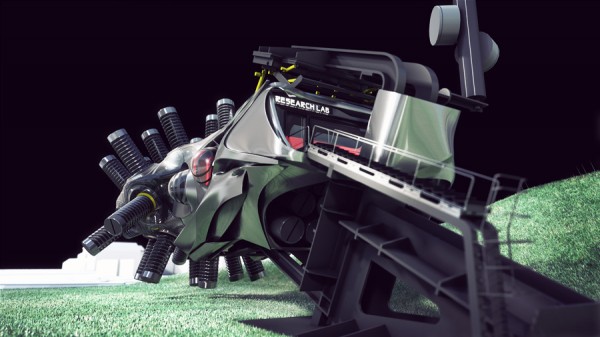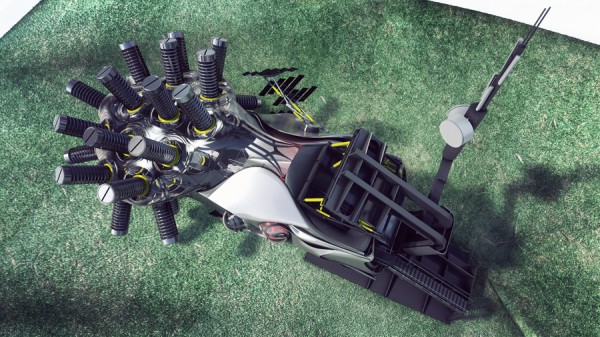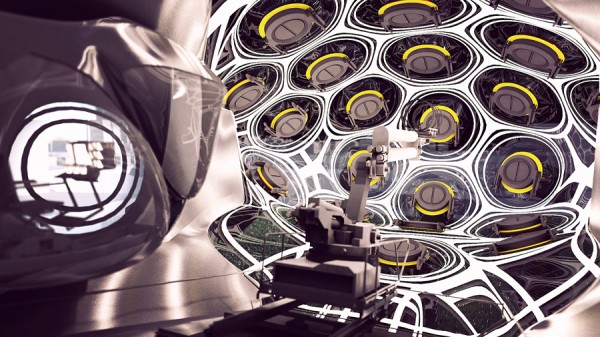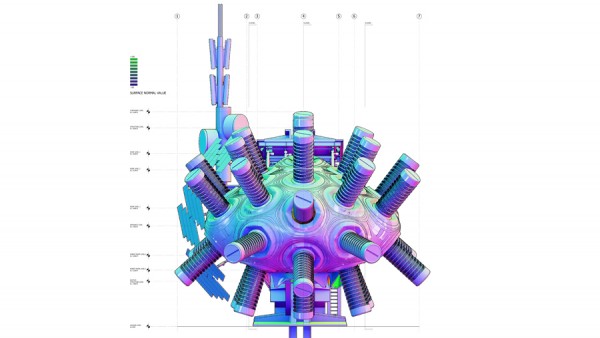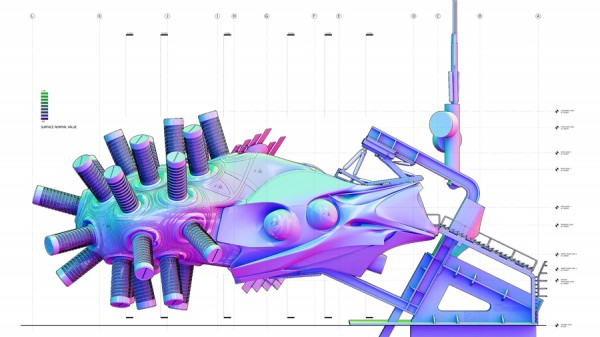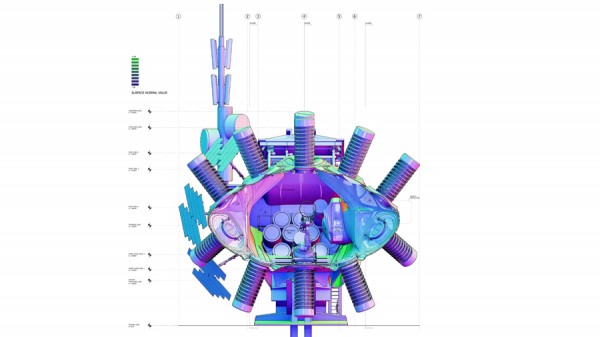Nanjing Lab is a vegetation laboratory located in the historical district of Nanjing. Different from the traditional vegetation lab, which focuses on the attributes of the plants themselves, the purpose of the Nanjing lab is to test the plants’ behavior inside Nanjing city, for instance, the plants’ reaction to the the city’s polluted air and dust.
Therefore, the design focuses on being able to control the plant’s interaction with the outside. In order to do this, different plant species are put into separate containers which protrude from the main volume of the building to the outside environment. The containers provide the ability to let sun light come through and control the amount of air that passes through. At the same time, the form of the landscape around the building creates different levels humidity and solar conditions around the building, allowing the containers to interact with a diverse environment.
In the center of the lab, there is a central robot arm that is able to take out the core of the container and place them into storage for further research. The control room of the robot’s arm is located on the south side of the building. The windows of the control room allow free view of the central robot room and the exterior.
The two big C channel steel beams are the main structure of the Nanjing lab. They lift the main body of the lab off of the ground to provide space for the underside plant containers. In between the C channel steel beams and the body of lab space is the hydraulic mechanical system that absorbs the impact of the structure from movement of the central robot arm.
Architect: Yaohua Wang Architecture
Location: Nanjing, China
Structural Engineer: Organization Group
Client: Nanjing Xiaguan district goverment
Program: Vegetation lab
Size: 200 m²

